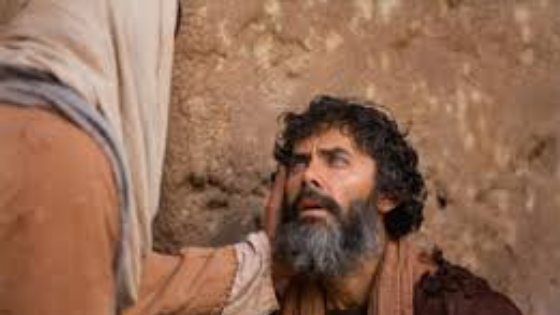Sunday Gospel Reading
32nd Sunday Ordinary Time of November 11, 2018
Readings: 1 Kgs 17:10–16; Ps. 146:6c–10; Heb 9:24–28; Mark 12, 38–44.
Download
 The protagonist of this week’s lectures is a poor widow of Sarepta who lives an extreme situation of indigence and suffering. This very realistic biblical image reminds us of a well-known figure of anawim [the poor of God] concerning a variety of high theological themes and motives of biblical spirituality. The mission of the anawim focuses on revealing the divine Mercy of God: that’s why these characters of biblical stories are always looking for truth and justice, demanding their legitimate right to be rescued and preserved of every kind of spiritual danger, in order to be saved and obtain the eternal life in heaven. Those crucial biblical themes of both Testaments rooted in exemplarity of human decision to resist spiritually, persevere in asking and pray to the Lord personally – face to face – make resonance in the whole Bible.
The protagonist of this week’s lectures is a poor widow of Sarepta who lives an extreme situation of indigence and suffering. This very realistic biblical image reminds us of a well-known figure of anawim [the poor of God] concerning a variety of high theological themes and motives of biblical spirituality. The mission of the anawim focuses on revealing the divine Mercy of God: that’s why these characters of biblical stories are always looking for truth and justice, demanding their legitimate right to be rescued and preserved of every kind of spiritual danger, in order to be saved and obtain the eternal life in heaven. Those crucial biblical themes of both Testaments rooted in exemplarity of human decision to resist spiritually, persevere in asking and pray to the Lord personally – face to face – make resonance in the whole Bible.
In the Gospel of Mark we encounter another anonymous widow in the same context of self-offering, sacrifice of love for God or fellow sake. As the widow of Sarepta, out of her poverty, sustains the life of Elijah – stranger in the desert of human indifference, in the land of sin, where there is no rain of God’s mercy [cf. 1 Kgs 17:7], – also this evangelic woman gives all her property, putting into the treasury the most precious thing she had – her own life. This radical example of total renounce to possess anything led us to observe some higher point of divine strategy of salvation.
From the theological point of view, the Letter to the Hebrews stresses out an extremely important eschatological aspect: primarily, Christ the High Priest has manifested [cf. perfectum pefanerōtai: Heb 9:26] i.e. offered Himself once, to put away sin. Secondly, there will be the Final Judgment, when the Son of God will appear again: not anymore with reference to sin [horis hamartias], but for salvation [eis sotērias]. Thus, those two polarities – sin vs. salvation – delimit the whole existence of men and women as followers of Christ. The real ability to see the Day of the Lord [yom Adonai: cf. Joel 2:1] – one of the eminent “light” metaphors of salvation [cf. Is 40:5] – depends on how generous, merciful and mindful we are to each other. pefanerōtai
In other words, eschatology in Holy Scriptures is tightly bound with soteriology and ethics. In this sense, the hypocrisy of the Pharisees [cf. Mk 12:38–40] as a literary pattern in the Gospels sounds as an ideological cliché – the opposite to the real commitment of love idealized by the little ones: humbles and poor, outsiders and losers. This dramatic separation between Christian and Judaic ethics and tradition reflected, for example, in the famous antitheses [cfc Mt. 5:21–48], caused many theological problems touching such debated questions as: the relationship between the First and New Testament, anti-Semitism in the Gospels as well as in the Patristic tradition, contrasted evaluation of the Law and Gospel.
In order to give an answer to such urgent imperatives promoted by the biblical text itself, it may be useful to remember what we have mentioned at the very beginning. As the Psalms say, the Lord loves the righteous (Ps 146:8), i.e. looks at our disposition to bring forth good fruit [Lk 6:43]. In God’s eyes, even the literal and meticulous observation of the Law, from the part of the Pharisees, may put into the treasury of the Kingdom of God those two mites [lepta duo: Mk 12:42], which are enough to imitate the sacrifice of Divine Love and Human Decision.
For Reflection and Discussion: 1. How can we reconcile, on the practical level, two striking imperatives of God’s Will: love and sustain the neighbor & observe the commandments? Is it possible for me to be at the same time merciful and righteous, as the Lord is? 2. Except the two widows, what other examples of extreme human needs do the biblical piety bring into account? 3. How the dialectics of Divine Mercy and Human Decision realizes in my life?
Bibliography: Artyushin, S. Raccontare la salvezza attraverso lo sguardo. Portata teologica e implicazioni pragmatiche del “vedere Gesù” nel Vangelo di Luca (Roma, 2014); Grilli, M. Quale rapporto tra i due Testamenti? Riflessione critica sui modelli ermeneutici classici concernenti l’unità delle Scritture (Bologna, 2007).
This week’s teaching commentary was prepared by
Philotheus (Artyushin), Moscow Theol. Academy, Doctorate in Biblical Theology,
Bat Kol alumnus [2011] artyushins@yandex.ru
[Copyright © 2018]
PLEASE NOTE: The weekly Gospel commentaries represent the research and creative thought of their authors, and are meant to stimulate deeper thinking about the meaning of the Sunday Scriptures. While they draw upon the study methods and sources employed by the Bat Kol Institute, the views and conclusions expressed in these commentaries are solely those of their authors, and do not necessarily represent the views of Bat Kol. Questions, comments and feedback are always welcome.
~~1983–2018~~
Bat Kol Institute, Jerusalem
“Christians Studying the Bible within its Jewish milieu, using Jewish Sources.”
Website: www.batkol.info; Commentary: gill@batkol.info



